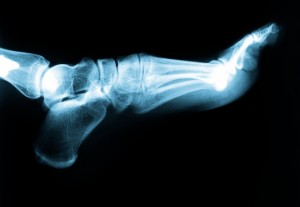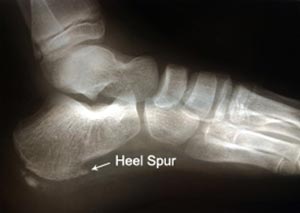These two diagnoses are related, they are not the same.
Plantar Fasciitis:
Plantar fasciitis refers to the inflammation of the plantar fascia–the tissue that forms the arch of the foot.
Causes:
The condition is a result of excessive stretching of plantar fascia ligament. It may be caused due to:
- Over-use: too much physical activity; running, walking or standing for a long time particularly if there is a rapid increase in activity over a short period of time
- Obesity
- Aging
- Shoes without cushions
- Walking barefoot on hard surfaces
- Occupations like teaching or working in a factory that requires walking or standing for longer periods
Plantar fasciitis can also be caused by certain diseases, including reactive arthritis and ankylosing spondylitis.
Symptoms:
- Pain in your foot usually near the heel
- Pain can span the entire bottom
- Pain and stiffness in the morning that gets worse as the day progresses
- Pain also is at its worse when first waking up in the morning or after a long period of rest of the feel since the ligament is overstretched to torn and it will tighten during rest.
- Pain which would get worse when climbing stairs or standing on toes
- Pain after standing for long time on flat surfaces
Treatment:
Most people who have plantar fasciitis recover in several months with conservative treatment, including resting, icing the painful area and stretching. Always upon getting up where a cushioned footwear for support; flat surfaces walking on barefoot is not good at all.
Heel Spurs:
A heel spur is a foot condition that’s created by a bony-like growth, called a calcium deposit, that extends between your heel bone and arch.
Heel spurs often start in the front of and underneath your heel. They eventually affect other parts of your foot. They can get up to half an inch in length. They may not necessarily be visible to the naked eye.
Detecting heel spurs can be challenging. Heel spurs don’t always cause pain, and not all heel pain is related to spurs. Keep reading to learn more about these bony growths and what causes them.
Causes:
One of the most common causes of heel and arch pain is overuse/ repetitive exertion with inadequately supportive shoes. Once again, most heel pain is caused by a condition known as plantar fasciitis.
Plantar fasciitis (fashee-EYE-tiss) is one of the most common causes of pain on the bottom of the heel. Approximately 2 million patients are treated for this condition every year.
Plantar fasciitis occurs when the plantar fascia, a strong band of tissue that supports the arch of your foot, becomes irritated and inflamed.
Joint damage from osteoarthritis is the most common cause of bone spurs. As osteoarthritis breaks down the cartilage cushioning the ends of your bones, your body attempts to repair the loss by creating bone spurs near the damaged area.
Symptoms:
- Pain and stiffness in the morning that gets worse as the day progresses
- Pain which would get worse when climbing stairs or standing on toes
- Pain after standing for long time
- Pain can be unbearable
- The pain is worse with obesity when standing up on the feet doing whatever activity, more weight is on the feet.
- The affected area may also feel warm to the touch.
- These symptoms may spread to the arch of your foot.
- Eventually, a small bony protrusion may be visible.
The pain is most intense when resuming activity after rest and tends to decrease with continued motion. This is due to the fact that the plantar fascia (the ligament that is strained in heel pain) tightens as we sleep. When we first step down again, a shocking tight pain can be felt!
Some heel spurs may cause no symptoms at all. You may also not see any changes in soft tissues or bones surrounding the heel. Heel spurs are often discovered only through X-rays and other tests done for another foot issue.
Treatment:
Because heel spurs are usually not the direct cause of heel pain, there is usually not many good reasons to surgically remove heel spurs. You can achieve relief from heel pain (plantar fasciitis) without ever removing the spurs! If you can figure out what the underlying cause is, you may be able to get rid of your pain.
Heel spurs are treated by measures that decrease the associated inflammation and avoid reinjury. Local ice applications both reduce pain and inflammation. Anti-inflammatory medications, such as naproxen (Aleve) and ibuprofen (Advil), or injections of cortisone, are often helpful. Do not walk barefoot or with just socks on anywhere. Again always upon getting up where a cushioned footwear for support. Walking on flat surfaces barefoot are not good at all.
Of course if you can’t easily figure out what the cause is and resolve it go to the expert the Podiatrist!

